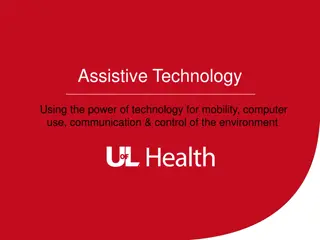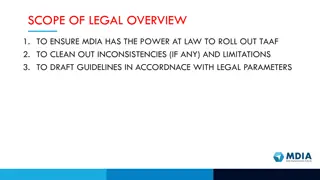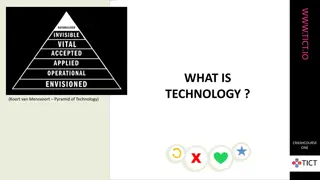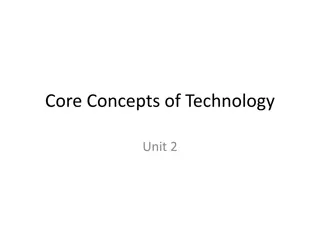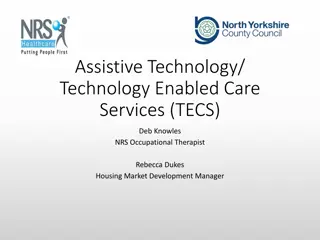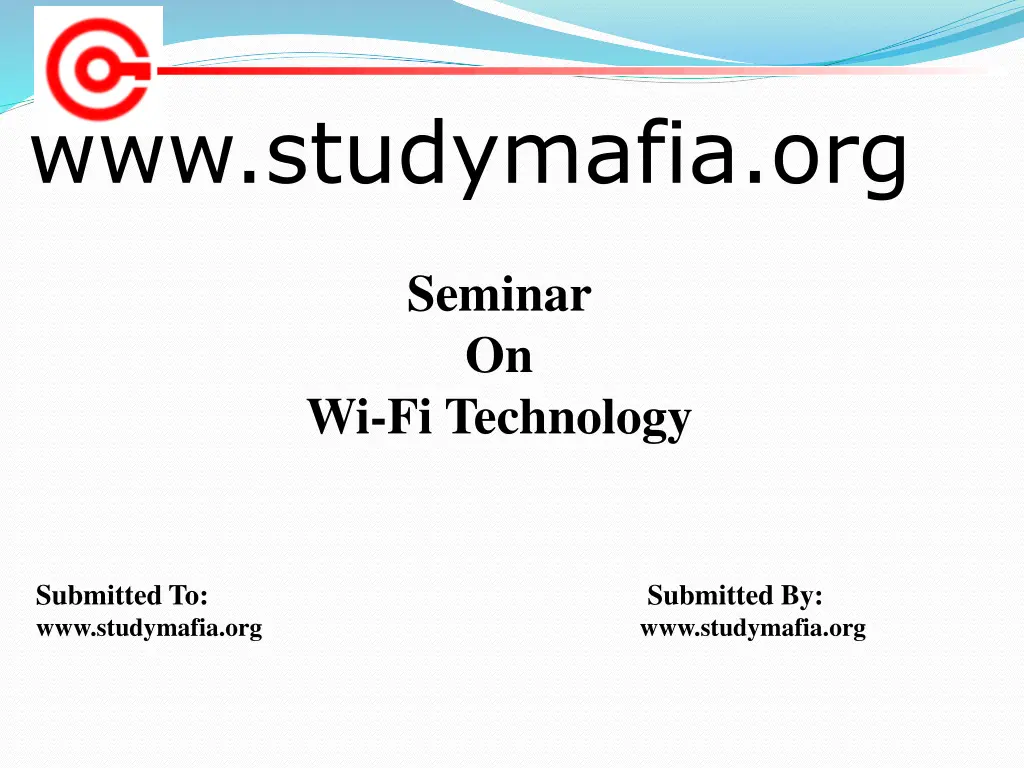
Understanding Wi-Fi Technology: Key Elements and Network Configurations
"Explore the world of Wi-Fi technology, its elements, how Wi-Fi networks operate, various topologies, configurations, security aspects, advantages, and limitations. Dive into the realm of wireless connectivity with this comprehensive seminar on Wi-Fi technology."
Download Presentation

Please find below an Image/Link to download the presentation.
The content on the website is provided AS IS for your information and personal use only. It may not be sold, licensed, or shared on other websites without obtaining consent from the author. If you encounter any issues during the download, it is possible that the publisher has removed the file from their server.
You are allowed to download the files provided on this website for personal or commercial use, subject to the condition that they are used lawfully. All files are the property of their respective owners.
The content on the website is provided AS IS for your information and personal use only. It may not be sold, licensed, or shared on other websites without obtaining consent from the author.
E N D
Presentation Transcript
www.studymafia.org Seminar On Wi-Fi Technology Submitted To: www.studymafia.org www.studymafia.org Submitted By:
Content Introduction What is Wi Fi Technology Elements How a Wi Fi networks Works Wi-Fi Network Topologies Wi-Fi Configurations Security Advantages Disadvantages Limitation Conclusion
Introduction Wireless Technology is an alternative to Wired Technology, which is commonly used, for connecting devices in wireless mode. Wi-Fi (Wireless Fidelity) is a generic term that refers to the IEEE 802.11 communications standard for Wireless Local Area Networks (WLANs). Wi-Fi Network connect computers to each other, to the internet and to the wired network.
What is Wi-Fi Technology Wi-Fi is the name of a popular wireless networking technology that uses radio waves to provide wireless high-speed Internet and network connections. A common misconception is that the term Wi-Fi is short for "wireless fidelity," however this is not the case. Wi-Fi is simply a trademarked phrase that means IEEE 802.11x.
Elements of a WI-FI Network Access Point (AP) - The AP is a wireless LAN transceiver or basestation that can connect one or many wireless devices simultaneously to the Internet. Wi-Fi cards - They accept the wireless signal and relay information. They can be internal and external.(e.g PCMCIA Card for Laptop and PCI Card for Desktop PC) Safeguards - Firewalls and anti-virus software protect networks from uninvited users and keep information secure.
Wi-Fi Network Topologies AP-based topology (Infrastructure Mode) Peer-to-peer topology (Ad-hoc Mode) Point-to-multipoint bridge topology
AP-based topology The client communicate through Access Point. BSA-RF coverage provided by an AP. ESA-It consists of 2 or more BSA. ESA cell includes 10-15% overlap to allow roaming.
Peer-to-peer topology AP is not required. Client devices within a cell can communicate directly with each other. It is useful for setting up of a wireless network quickly and easily.
Point-to-multipoint bridge topology This is used to connect a LAN in one building to a LANs in other buildings even if the buildings are miles apart. These conditions receive a clear line of sight between buildings. The line-of-sight range varies based on the type of wireless bridge and antenna used as well as the environmental conditions.
Security Service Set Identifier (SSID) Wired Equivalent Privacy (WEP) 802.1X Access Control Wireless Protected Access (WPA) IEEE 802.11i
Advantages Flexible Responsive Customized Fast Cost-Effective Secure
Disadvantages Spectrum assignments and operational limitations are not consistent worldwide. Power consumption is fairly high compared to some other low- bandwidth standards. Wi-Fi networks have limited range. Wi-Fi pollution, or an excessive number of access points in the area, especially on the same or neighboring channel, can prevent access and interfere with the use of other access points by others.
Limitations It has a limited bandwidth of about 83.5 MHz. Frequency spectrum used by IEEE 802.11b is shared by many other systems like microwave ovens, cordless phones etc. This frequency sharing causes interference problem. Security techniques are not reliable yet.
Conclusion Wi-Fi provides freedom: freedom to physically move around your home or business and still stay connected to the Internet or local network; freedom to grow and move an office or business without having to install new cables and wires; freedom to be connected while traveling and on the road.
References www.studymafia.org www.wikipedia.com www.google.com




